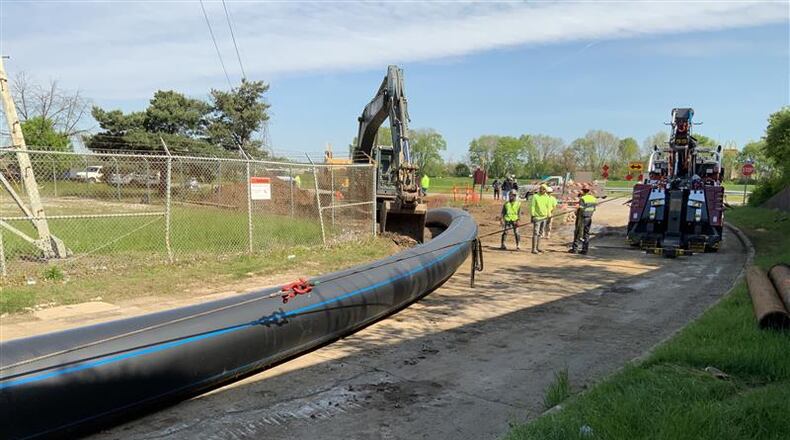Our Environmental Management Division oversees the Source Water Protection Program (SWPP). Founded in 1988, our SWPP is a national and international model of innovative water resource management and protection. The Ohio EPA cites it as one of the most significant case studies on how to develop and implement a comprehensive and successful source water protection program. The Environmental Management Division has worked to increase the SWPP capabilities, recently expanding the program’s network to more than 500 monitoring wells that provide early detection of potential contaminants.
Many of these wells are equipped with automated monitoring, providing early warnings of threats to water safety. This division also manages our Municipal Separate Storm Sewer System, including response to spills, community education, facility inspections and monitoring the quality of the water flowing to our rivers and at our more than 550 stormwater outfalls — allowing us to monitor the results after surface water and groundwater interact and providing an early warning system to notify downstream communities of potential issues.
Our Water Supply & Treatment Division produces an average of 65 million gallons per day (MGD) of clean drinking water — in full compliance with all regulatory requirements — at the Miami and Ottawa Water Treatment plants. This division works to keep our drinking water safe, including softening, disinfection and fluoridation. The division also oversees the two wellfields, Mad River and Miami, where water is withdrawn from the aquifer and sent to the treatment plants. The water that reaches our customers’ taps is monitored continuously by dedicated professionals at state-of-the-art testing and lab facilities to ensure water quality standards are met.
Our Water Utility & Field Operations Division is responsible for a water distribution system with approximately 800 miles of water mains. This system is part of a network that contains 16 water storage facilities with an 88-million gallon capacity. The city’s distribution system is divided into north and south, with downtown Dayton as the dividing line. The Miami Treatment Plant supplies water to the north side, and the Ottawa Treatment Plant covers the south side. The entire city of Dayton’s distribution system can be supplied from either treatment plant campus if needed.
The Ottawa Pump Station and Miami North/South Pump Stations have multiple service pumps — all these systems provide additional redundancy to ensure safe water for customers. All pump stations, elevated storage tanks and reservoirs in Dayton’s system are controlled through our Supervisory Control and Data Acquisition (SCADA) system, isolated from all other systems for cybersecurity reasons. SCADA is also used by treatment plant operators to monitor water quality in the distribution system.
Since 2013, our Engineering Division has deployed an enhanced repair and replacement program for the Water Distribution and Wastewater Collection Systems, investing $213 million during this period. The department closely tracks existing projects and continues to investigate new technologies such as “smart water and smart sewer systems,” which enhance water quality and safety. Our engineers are also installing sensors within the water distribution system to better define and monitor system pressures and executing a large valve maintenance program for the repair and rehabilitation of large diameter water mains.
In the end, most importantly, are the people who work in these divisions. They’re the people you see at the store, at school and at church. They’re your neighbors and they depend on the same safe, high-quality water as you. The people who make up our city of Dayton Department of Water work every day to fulfill their mission: to be our region’s nationally recognized provider of premier water services.
Shelley Dickstein has been the Dayton city manager since 2016.
About the Author

